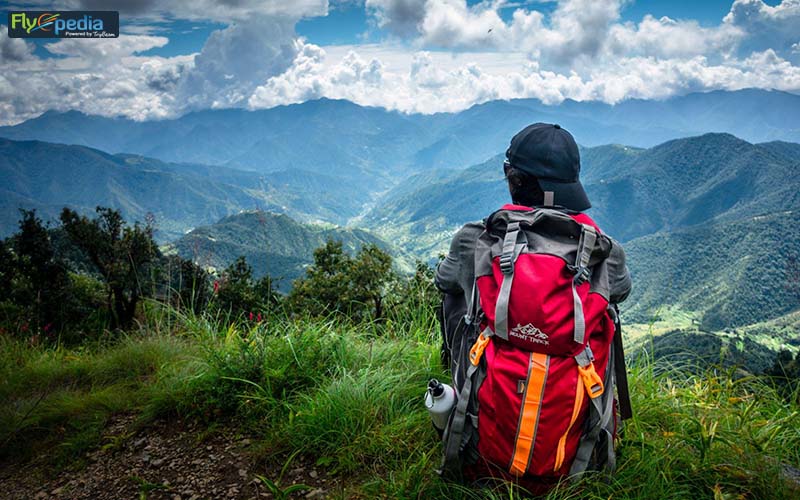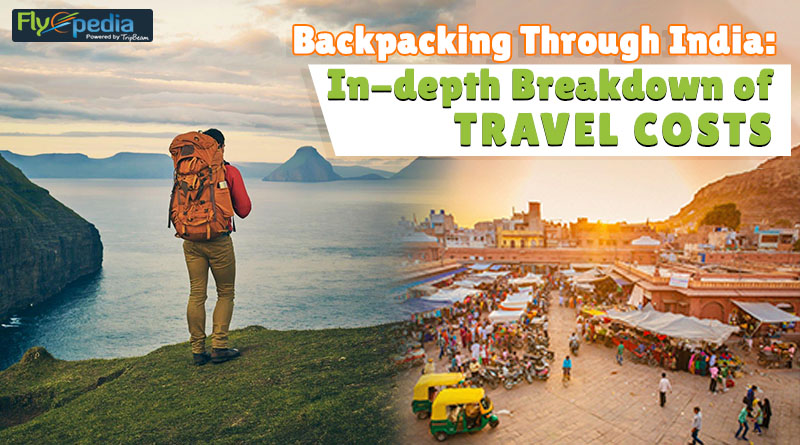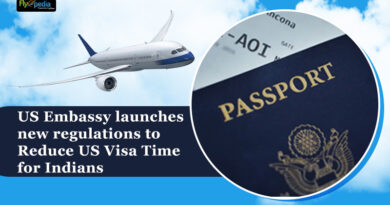Backpacking Through India: In-depth Breakdown of Travel Costs
India offers a variety of attractions, including its delicious cuisine, rich cultural heritage, and architectural wonders. However, one of the best things about visiting India is that it offers experiences at costs that suit all travelers, from budget backpackers to those who want lavish vacations. By reading this blog, “Backpacking Through India: In-depth Breakdown of Travel Costs” you can determine how much it will cost to travel to India and create a budget accordingly.
India is a budget-friendly destination because of its inexpensive housing options, services, and food, as well as its declining rupee. India offers you a wide range of choices across all categories. Everything is accessible, including 5-star hotels, mid-range boutique hotels and resorts, opulent rail trips, private automobiles, fine dining, and international restaurants! So, if you are looking for cheap flight tickets to India from USA, read further to learn where to book and how much it costs to travel in India.
Getting to India

Airfare is typically the biggest expense. Therefore, it is recommended to travel during the off-season (January through May and September through October) or shoulder season (August and November 15 through December 10) to reduce travel expenses. It will be expensive to travel over long weekends and during peak season (December–January and June–July). You may find a lot of flash sales if you just keep an eye out for them. Furthermore, flights during the week are more affordable. You should also buy your tickets at least two to four months in advance of your vacation to save up to 50% on airfare.
Getting Around India
Traveling within India can be done by plane, train, or bus. Another option is to hitchhike if you can.
Flights:
Given the breadth of India, flying is a good alternative for domestic travel as long as you book in a timely manner and select the appropriate airline. For instance, travel midweek (Tuesday through Thursday), take connecting flights rather than direct ones and go when it’s less busy, like early in the morning or late at night. The best option is to use an “incognito window” because every website tracks the number of viewers and clicks on the page, so the next time you ask for the fare, you will notice an increase in price. This is another essential tip for travelers to India on a budget.
Additionally, you can use online travel websites such as Flyopedia to book cheap air tickets to Delhi from USA. The local airline Air India offers the “Discover India Pass” (fly pass), which entitles holders to unlimited travel on Indian airline routes for around 15 or 21 days, for roughly INR 32,000 ($500). Foreigners can also benefit from Indian Airlines’ “India Wonder Fares,” which allow unlimited travel in Economy class between any two destinations in any of the four regions (North, West, East, and South), with the caveat that no region may be visited more than once. It costs about INR 20,000 ($300). Similarly to this, Jet Airways offers travelers a “Explore India Pass” that allows them to fly in economy class to 46 domestic locations.
Trains:
The best way to experience real India while keeping your wallet full is by taking the train. India has an advanced rail infrastructure, and the cost of traveling between cities varies substantially. Choose a general or sleeper class ticket for short trips, and an AC 3-tier ticket for slightly longer trips. Senior citizens are entitled to a 40% fare discount. You may also use a RAC ticket for an overnight trip, but you will have to share a berth with another passenger.
Use the IRCTC app; it loads pages considerably more quickly than the main site. Use ‘Tatkal booking’ if you are unable to reserve a seat on a train using the conventional method. Tatkal ticketing begins at 10 am since the available tickets fill up quickly. Log up early and purchase your seats right away. Go for rail travel in India without a second thought; it will save you money unlike anything else. Tip: Carry chains and a padlock to secure your stuff.
Public Transport:
Buses and Volvos are more affordable options for intercity travel. When going to cities like Bangalore, Delhi, Mumbai, Kolkata, Jaipur, Chennai, Kochi, and Gurugram, take the Metro because it is more effective and less expensive. You can buy Metrocards at the ticket window of the metro station. The only means of transit available to you in Mumbai are local trains.
In India, “Shared Autos,” also known as “Gramin Seva,” are available for shorter trips. If your license is still valid, you can rent a car, bike, or cycle and explore the city like a pro. One of your other best options for traveling around the city is calling a cab. Install a taxi app, such as Ola or TaxiForSure, to get free first-two rides.
Accommodation in India
India offers a wide variety of lodging choices. The greatest option for a budget-friendly stay without breaking the bank is a backpacker hostel. In addition, you can meet other visitors and exchange travel stories about India. Backpacker-friendly hostels can be found in several locations, including the Bunkyard Hostel in Udaipur, the Wanderers Hostel and Roadhouse Hostel in Goa, as well as the Zostel in Pan India, the Bonfire Hostel in Agra, the Jugaad Hostel and the Madpackers hostel in Delhi.
Thus, you can take cheap flights from USA to Goa with Flyopedia and stay at a Backpacker-friendly hostel. A night at a backpacker hostel costs between INR 300 and INR 600 ($5 and $10). Travelers can stay in a guesthouse or inexpensive hotel with air conditioning or without for approximately INR 650–INR 1,300 ($10–$20).
Food Cost in India
Indian food is diverse, eclectic, and delicious. Backpackers can have a substantial dinner and a bottle of water for $1 to $2. In a mid-range restaurant, a three-course meal may cost roughly $5; a beer might cost about $1.50 in a bar/restaurant. Instead of spending your money at upscale cafés, bistros, and restaurants, choose one of the many inexpensive neighborhood eateries that serve equally good meals.
Also Read: Backpackers Guide to Explore Goa!
Activities
It goes without saying that everything you do and see will increase the expense of your trip. The majority of sites in India have prices ranging from INR 200 to INR 1000 ($3 to $15). For example, a day trip to the Taj Mahal in Agra will cost INR 1,000 ($15); Amer Fort in Jaipur is about INR 200 ($3); and Qutub Minar in Delhi is about INR 500 ($8). And if you want to engage in daring activities, be prepared to loosen your financial restrictions.
Daily Budget: Travelers who stay in budget hotels or hostels, ride public transportation, and eat at less costly restaurants should expect to spend between INR 900 and INR 1,200 ($14 and $18) each day.
To Sum Up
Backpacking around India is a very diverse and educational experience that gives you the chance to fully appreciate the country’s distinctive culture, breathtaking nature, and historical wonders. By properly managing your spending and selecting the right course of action, you can expand your trip while still staying within your budget. Additionally, to make your journey even more affordable, consider leveraging on the best online travel website Flyopedia.ca and secure cheap flight tickets from Canada to India.
Also Read: Travel Tips for India that you won’t find in Guidebooks




